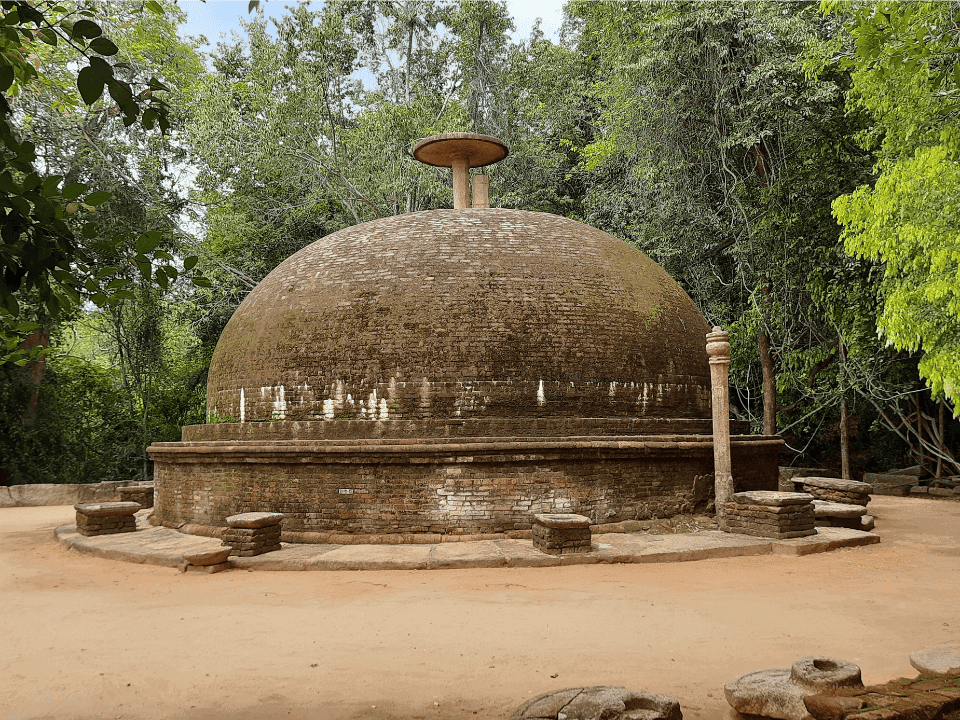The Rajagala monastery site is special due to having been blessed by the Buddhist missionary Venerable Mahinda himself, the monk responsible for having brought the Buddhist doctrine down to the country from its original home of North India. It is also believed that his body is buried here, although it might just be lore, and one wonders if the locals might be happy to allow archaeologists to tamper with an enlightened arahat’s grave. That is if there is even a grave here. The ruins of the monastery themselves are situated in the Ampara District of the Eastern Province and are situated over a kilometer or so above sea level. The name of the place, Rajagala, is a corruption of “Rassagala”, or “Raksha-gala”. This means that the Rakshasa tribe used to dwell here. This extinct genetic group is often referred to as being demonic but may in reality have been an extension of the Neolithic cultures of the country.
As for the Rajagala monastery, we have a lot of stone ruins preserved in wet, jungle territory. In total there are five hundred artifacts here, ranging from an unfinished stone Buddha image to balustrades. One area of the Rassagala Mountain contains caves that might have been held human dwellings during the age of the Balangoda Paleolithic Culture. However, while there are definitely drawings in these caves said to date back to 35,000 years ago it is less certain that they are what they have been claimed to be. In truth, we might never really know if people did live here for so long.
We know though that the monks lived in the caves when the monastery was still standing here.
What we do have though are the ruins of an ancient monastery with some unique pieces of art that have not been seen before. For one, we have a large moonstone that has absolutely no animal figures on it but instead is filled with an image of a flower. This is not seen in any Rajarata moonstones but this floral design is seen in Kandyan examples of this artwork.
Written by Vasika Udurawane for Travel Lanka Compass



0 Comment